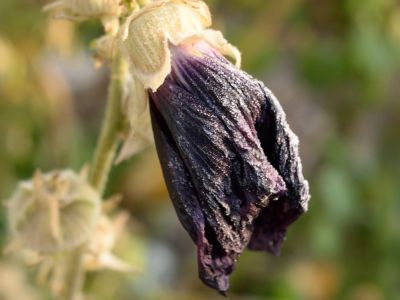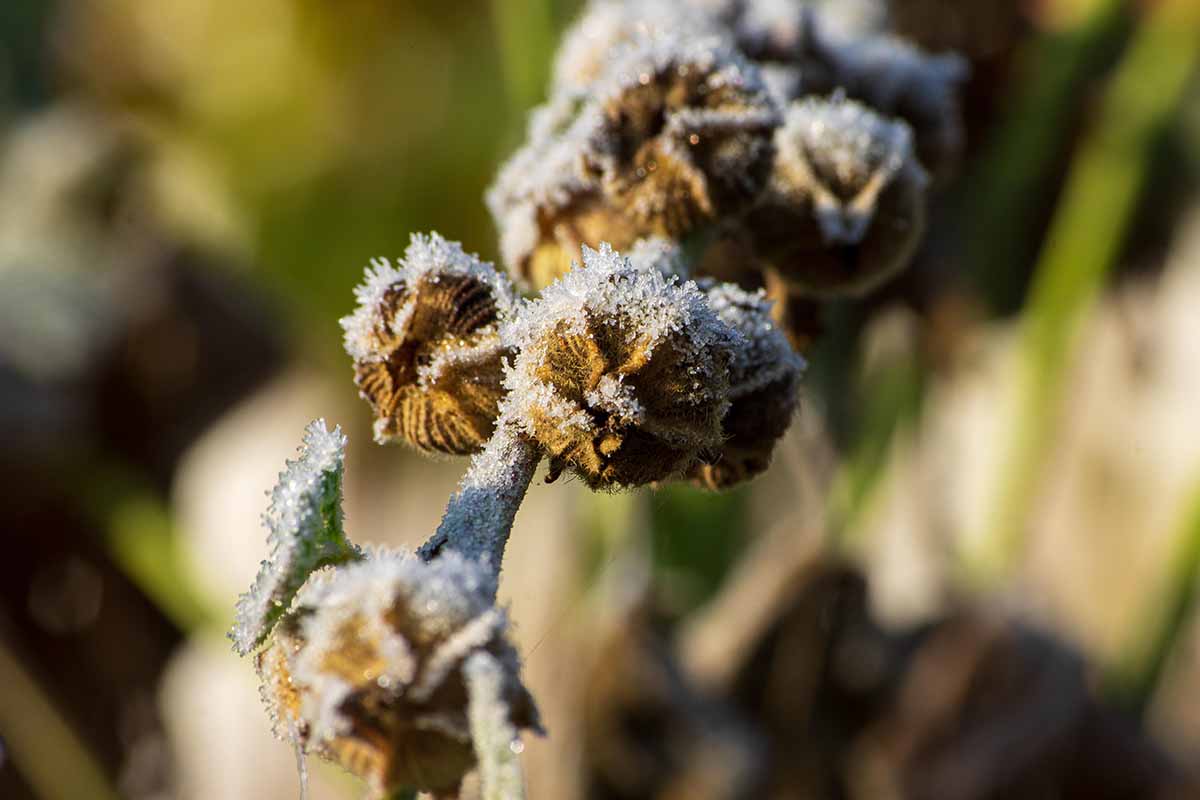To winterize hollyhocks, cut them back to the ground and cover the base with a layer of mulch or compost. Hollyhocks are beautiful flowering plants that can add color and charm to any garden.
However, as winter approaches, it is important to take proper care of your hollyhocks to ensure their survival. We will discuss how to winterize hollyhocks so that they can withstand the harsh winter conditions and come back strong in the spring.
By following these simple steps, you can protect your hollyhocks and enjoy their vibrant blooms year after year. So let’s dive in and learn how to prepare your hollyhocks for the cold winter months.

Credit: www.gardeningknowhow.com
Inspect And Clean The Plants
To ensure your hollyhocks survive the winter months, it’s essential to inspect and clean the plants. Start by removing any dead or diseased leaves. These can harbor pests and diseases that can spread and harm the plant’s overall health. Check for signs of pests or diseases, such as aphids or powdery mildew. If you spot any issues, treat them accordingly.
Another important step is to prune the plants to promote healthy growth. Trim back any dead or damaged branches, as well as any excessively long stems. This will encourage new growth when spring arrives. Additionally, removing spent flower heads can prevent self-seeding and help redirect energy back into the plant.
How to Winterize Hollyhocks: Step by Step Guide
Prepare The Soil And Surroundings
Clear away weeds and debris from the base of the plants. Apply a layer of mulch around the plants to protect the roots. Provide support for tall hollyhocks to prevent them from toppling over during winter storms.
In winterizing hollyhocks, it is crucial to prepare the soil and surroundings effectively. Start by clearing away any weeds and debris that may have accumulated around the base of the plants. This will help promote a clean and healthy environment for the hollyhocks throughout the winter season.
Applying a layer of mulch around the plants is essential to protect their delicate roots from harsh winter conditions. Mulch acts as insulation, maintaining a more consistent temperature and moisture level for the hollyhocks.
Additionally, providing support for tall hollyhocks is crucial to prevent them from toppling over during winter storms. Use stakes or a trellis system to keep the plants sturdy and upright. This will prevent any potential damage caused by heavy snow or winds.
Apply A Protective Covering
Winterizing hollyhocks is crucial to protect them from the harsh winter conditions. One method to apply a protective covering is by wrapping the base of the plants with burlap. This will shield them from the strong winter winds. Additionally, using straw or shredded leaves to insulate the crown of the plants can help prevent freezing temperatures from damaging them.
Another effective way to provide added protection is by covering the plants with a frost blanket or plant covers. These covers will create a barrier against the cold and help maintain a stable temperature for the hollyhocks. Overall, winterizing hollyhocks with these protective measures will increase their chances of surviving the winter and thriving in the next growing season.
Monitor And Maintain
Checking your hollyhocks regularly during the winter months is important to ensure their health and vitality. Keep an eye out for any signs of damage or stress, such as browning or wilting leaves. Water the plants sparingly during dry periods to prevent dehydration, as it can cause root damage. In early spring, remove any excess mulch or covering that you may have applied to protect the plants during the cold winter months.
This will allow for new growth to emerge without obstruction. By monitoring and maintaining your hollyhocks throughout the winter, you can help them stay strong and vibrant come springtime.
Frequently Asked Questions Of How To Winterize Hollyhocks
How Do You Winterize Hollyhocks?
To winterize hollyhocks, cut them back to about 6 inches and remove any dead leaves or debris. Mulch the base of the plant with compost or straw to protect the roots from freezing temperatures. Water the plants well before the ground freezes, and make sure they are in a well-drained area.
Can You Leave Hollyhocks Outside In The Winter?
While hollyhocks are hardy perennials, it is generally recommended to provide some protection for them in winter. Mulch the base of the plants with compost or straw to insulate the roots from freezing. Additionally, you can cover the plants with a layer of burlap or frost cloth to further protect them from harsh weather.
When Should I Winterize My Hollyhocks?
It is best to winterize hollyhocks in late fall, before the ground freezes. This typically falls around November to early December, depending on your climate. By winterizing before the ground freezes, you can help ensure that the hollyhocks survive the winter and come back stronger in the next growing season.
Conclusion
Winterizing hollyhocks is essential for their survival during cold temperatures. By following these steps – cutting back the plant, mulching the soil, and providing adequate protection – you can ensure the health and vitality of your hollyhocks. Remember to remove any dead foliage and monitor for pests or diseases.
With proper care and attention, your hollyhocks will thrive year after year.

